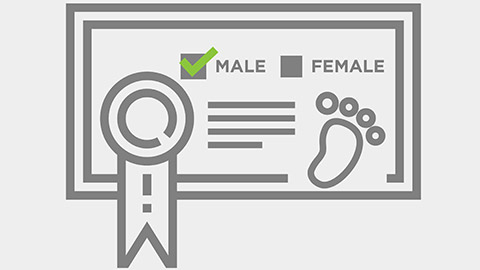Sex redefined

We all know that bodies come in all shapes and sizes. But did you know that differences in our bodies extend to biological sex traits as well?
What is biological sex, exactly? Doctors typically assign the sex of a child based on outward appearance. If a baby has a penis, he’s male. If a baby has a vagina, she’s female. But there is more to biological sex than meets the eye.
What is biological sex? It’s actually a combination of genitalia + gonads (testes, ovaries) + hormones + chromosomes + secondary sex characteristics (breasts, body hair). And these characteristics do not fit neatly into just two categories.
It turns out that there is a lot of variety in biological sex, and many researchers feel these differences better fit a spectrum than two distinct boxes.
“I think there's much greater diversity within male or female, and there is certainly an area of overlap where some people can't easily define themselves within the binary structure,” says Dr. John Achermann, professor of pediatric endocrinology at University College of London's Institute of Child Health (Ainsworth, 2015, “Sex redefined” para. 4).
Dr. Arthur Arnold, professor of biology and physiology at the Brain Research Institute of UCLA, puts it this way:
“The main problem with a strong dichotomy is that there are intermediate cases that push the limits and ask us to figure out exactly where the dividing line is between males and females," he explains. “And that’s often a very difficult problem, because sex can be defined in a number of ways” (Ainsworth, 2015, "Sex redefined" para. 6).
The variety in biological sex is most clearly seen in the case of people born with variations in sex traits or reproductive anatomy, commonly known as intersex. Nature journalist Claire Ainsworth (2015) explains:
“Sex can be much more complicated than it at first seems. According to the simple scenario, the presence or absence of a Y chromosome is what counts: with it, you are male, and without it, you are female. But doctors have long known that some people straddle the boundary — their sex chromosomes say one thing, but their gonads (ovaries or testes) or sexual anatomy say another.” (Ainsworth, 2015, “Sex redefined” para. 3)
Ainsworth (2015) continues:
“Parents of children with these kinds of conditions — known as intersex conditions, or differences or disorders of sex development (DSDs) — often face difficult decisions about whether to bring up their child as a boy or a girl. Some researchers now say that as many as 1 person in 100 has some form of DSD.” (Ainsworth, 2015, “Sex redefined” para. 3)
But scientists are now learning that differences aren’t limited to people born intersex. The variety in biological sex extends far beyond that. Ainsworth (2015) writes:
“New technologies in DNA sequencing and cell biology are revealing that almost everyone is, to varying degrees, a patchwork of genetically distinct cells, some with a sex that might not match that of the rest of their body. Some studies even suggest that the sex of each cell drives its behaviour, through a complicated network of molecular interactions.” (Ainsworth, 2015, "Sex redefined” para. 4)
Featured Content
Scientists like John Achermann are revolutionizing our understanding of biological sex. Read the full Nature article to learn more about their discoveries. You can even hear Claire Ainsworth discuss the cutting-edge research behind the article.
References:
Ainsworth, C. (2015). Sex redefined: The idea of two sexes is simplistic. Biologists now think there is a wider spectrum than that. Nature, 518, 288-291. https://www.nature.com/news/polopoly_fs/1.16943!/menu/main/topColumns/topLeftColumn/pdf/518288a.pdf
